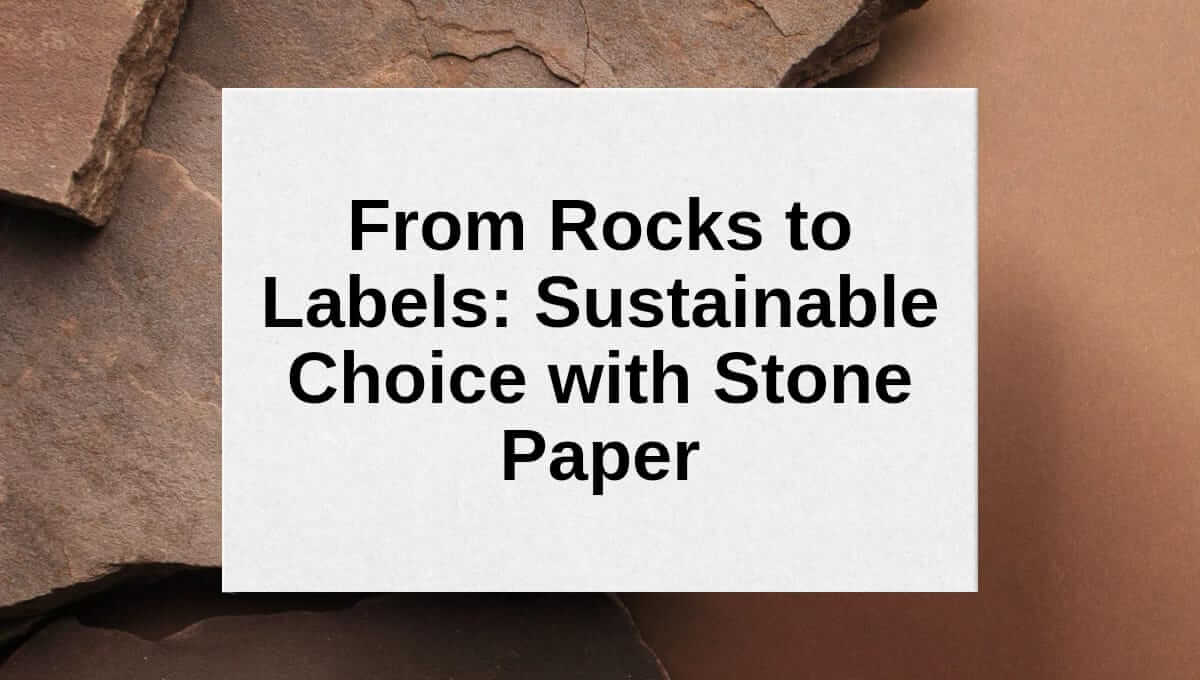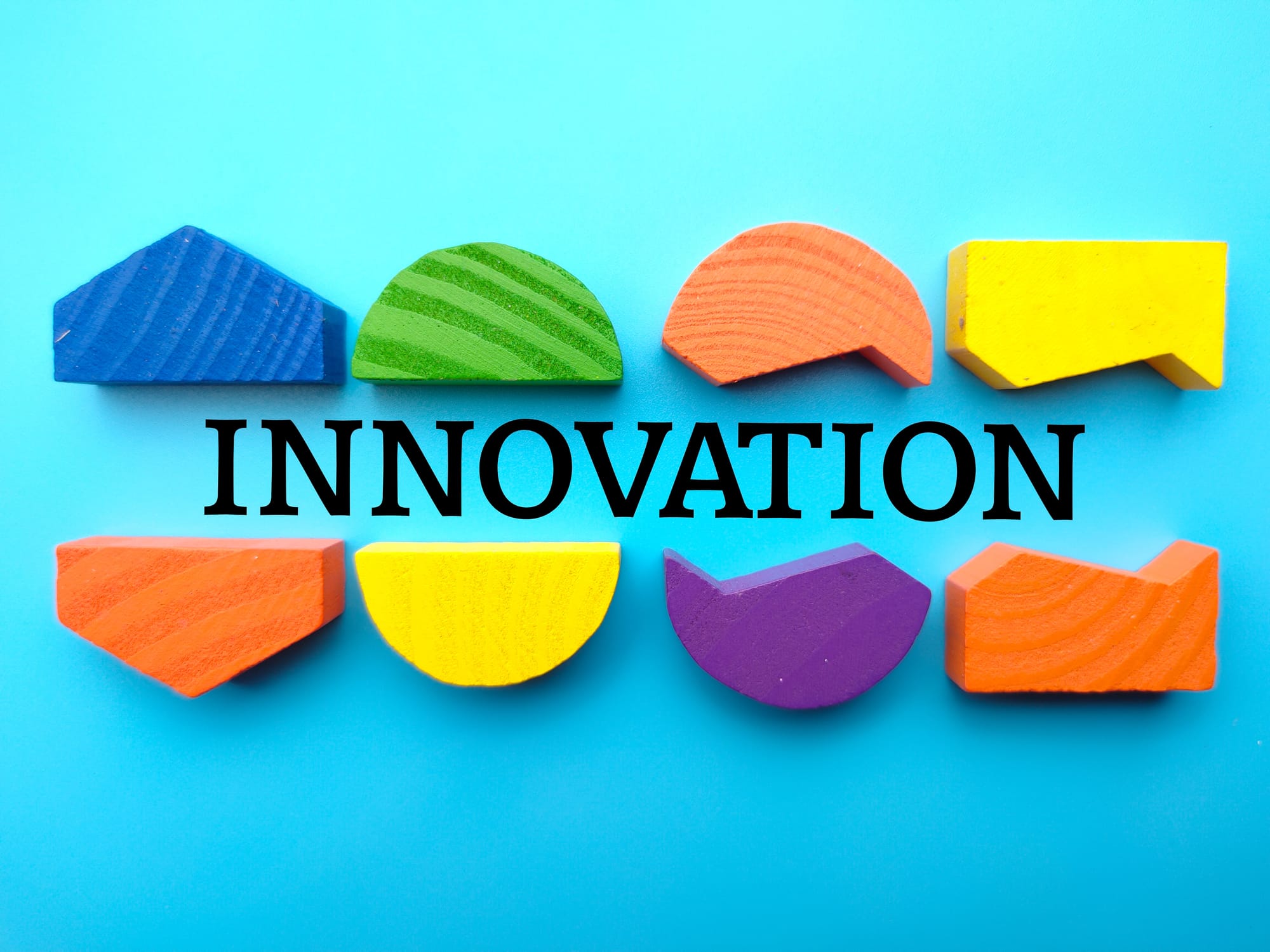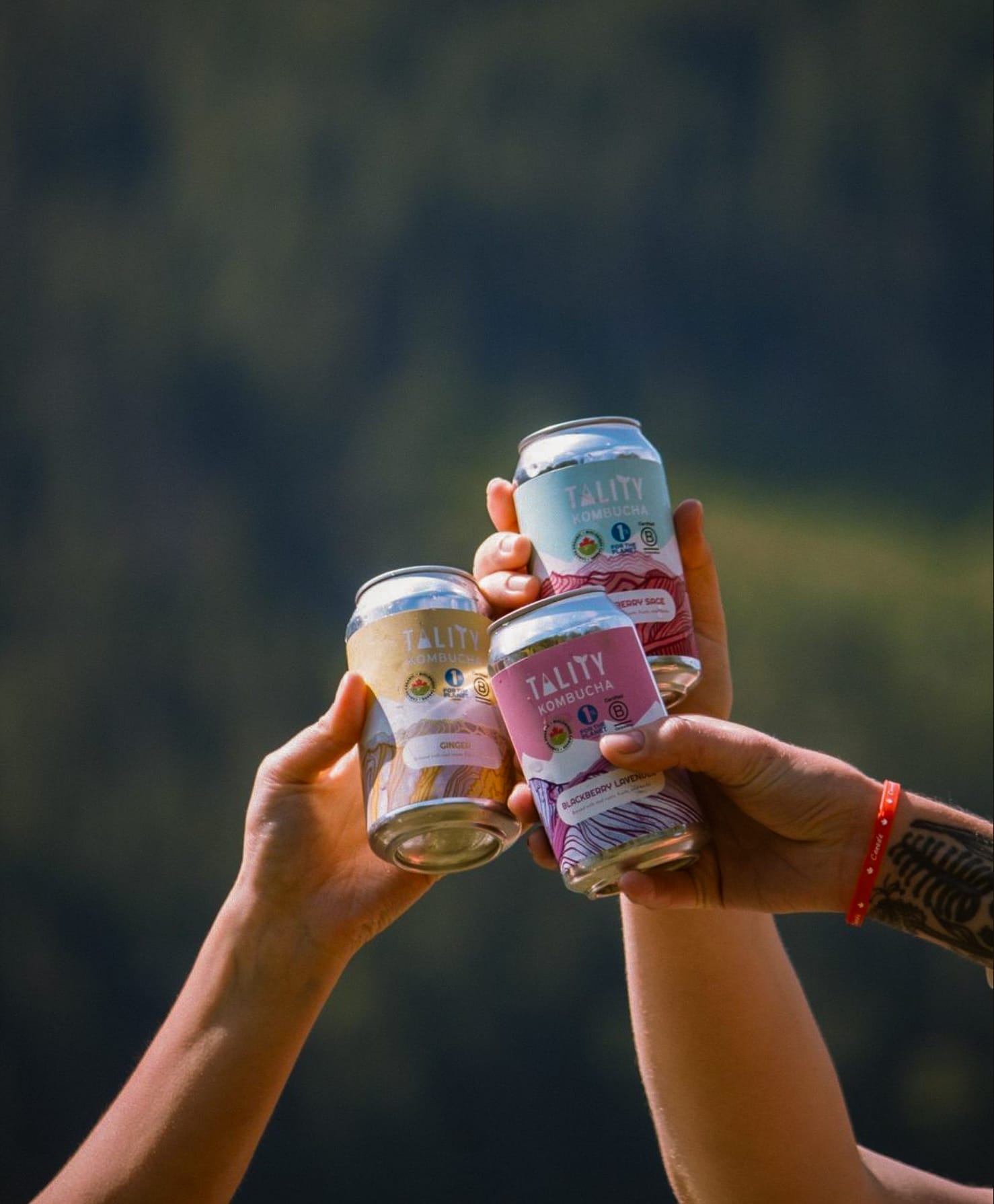From Rocks to Labels: Sustainable Choice with Stone Paper

Every brand wants to stand out and win the hearts of its audience. To achieve this target, they try many strategies. However, not all marketing strategies are equally effective in taking your brand to the next level. This is because consumers' demands are changing, and understanding them is more important than ever.
Incorporating sustainability into your brand gives you a competitive edge and is a great way to attract eco-conscious customers. Tality Kombucha, a wellness-driven brand, is taking a notable step in sustainability by using stone paper for its labels.
Stone paper is 100% tree-free and highly durable. It provides an eco-friendly solution that aligns perfectly with the brand's mission to promote wellness for people and the planet.
So let's dive into it and learn more about paper stone.
What Is Stone Paper?

Stone paper is generally made from 80% calcium carbonate and 20% high-density resin. It is a great alternative to traditional paper and does not harm the environment.
But why?
Regular paper production requires large amounts of water, trees, and chemicals. However, stone paper is created with minimal resources and produces no toxic substances.
Stone paper production is a low-energy process compared to traditional paper manufacturing. Here is a quick overview of its manufacturing process.
- Limestone is crushed and ground into fine powder. It converts into white chalk-like material.
- Calcium carbonate powder is then mixed with HPDE. This forms a pulp that can easily be shaped and compressed.
- Lastly, the mixture is rolled out into thin sheets with the help of specialized machinery. These are similar to traditional paper mills but have low energy requirements and zero water usage.
Sustainability Efforts Of Tality Kombucha
Tality Kombucha's mission centers around holistic wellness. Imagine a brand preaching positive things but using harmful substances in its packaging and labels.
Will it align with their brand mission?
Not at all.
That is why you should carefully choose materials for product labels and packaging. Choosing stone paper is a deliberate decision because it aligns with the brand's desire to reduce environmental impact without compromising quality.
It also pushes customers to choose your product over competitors. But how?
In a survey, people were asked about their point of view on sustainable packaging. Nearly 40% of respondents said they often or always prefer products with sustainable packaging. It's because they want to contribute to improving the environment.
Tality Kombucha's Stone Paper Label Design
Generally, people believe that options for customizing the labels become limited if you use stone paper. But that's not what happens. The aesthetics of Tality Kombucha's labels are further enhanced by using stone's naturally beautiful and velvety surface. This smooth texture not only contributes to the visual appeal of Tality's bottles but also enhances the bold colors and details of each label.
Stone Paper = Making Every Bottle Flavor Stand Out.
So, when their product is on the retail shelf it intrigues customers. They become curious about it, and the chances of sales increase.

Source - @talitywellness
Tality Kombucha offers a range of healthy drinks, including Blackberry Lavender, Elderberry, Ginger, and Raspberry Sage. Each drink has attractive labels that draw customers' attention and show their commitment to sustainability.
It's great for health—and eco-conscious people. It mainly appeals to people who value health and convenience, often bringing their bottles to the gym, on hikes, or to work. Since it is tear-resistant, it ensures that labels stay intact regardless of the environment in which you move the bottle.
This unique combination of strength and beauty reinforces the message of Tality Kombucha. A healthier lifestyle can coexist with a greener planet.
How Is Stone Paper Different From Traditional Paper?
You might already know a lot about stone paper and how it differs from traditional paper. But it's important to have a quick overview of the major differences between each so you can make an informed decision.
Key Features of Stone Paper That Set It Apart
Stone paper is helping to free the environment from many toxins. However, is it the right choice for your products?
Here are some of the key features of stone paper to help you get clarity on why you should choose stone paper.
Eco-Friendly and 100% Tree-Free
Do you know how many trees are cut down to make just one piece of paper?
According to the latest research, almost one-fifth of trees are needed to make a sheet of paper. But the good news is that you don't need to harm any tree to manufacture stone paper. This is a crucial factor in preserving forests and reducing deforestation.
Many companies are replacing traditional paper packaging with stone paper. If you want to demonstrate your commitment to sustainability, it's time to shift to stone paper.
Naturally Bright and Smooth Surface
To make regular paper visually appealing, it's important to process it differently, such as bleaching or additional chemical treatments. However, this can produce harmful pollutants.
You do not need to worry about this on stone paper. What is the reason behind that?
Stone paper has a naturally bright and smooth texture. It offers a premium look and feel for labels without harming the environment.
Water-Resistant and Tear-Resistant
Are you selling any refrigerated products?
The stone paper's moisture-resistant properties are particularly beneficial. The label maintains its pristine quality even if you store the product or bottle in a cooler or refrigerator. So, it's an ideal choice for a beverage that requires regular refrigeration.
Photo-Degradable and Recyclable
You already know that stone paper is highly durable. However, it may break down in sunlight with time, reducing waste in landfills and further enhancing the sustainability of your product packaging.
Stone Paper = Reduce Its Environmental Footprint
Cradle-to-Cradle Certification
Cradle-to-cradle certification is a global system for assigning scores to brands based on their contribution to the circular economy. It includes reducing waste and poisonous chemicals, efficiently managing resources, and reusing materials.
Stone paper has cradle-to-cradle certification, which means it complies with strict environmental and sustainability standards. Thus, any brand that has the certification is considered an eco-friendly company, and it reinforces its brand image as an environmentally responsible choice.
How Stone Paper Is Transforming the Labeling Industry?
Stone paper's unique features make it stand out among all the labeling choices available. It's commonly used in the beverage industry, but other industries, such as cosmetics and food packaging, are also beginning to incorporate stone paper.
But why are they doing it?
Because it is durable, water resistant, and not harmful to the environment.
Tality Kombucha is setting a huge benchmark by using sustainable packaging. It encourages other brands to consider stone paper as a viable alternative.
Generally, brands are concerned about how these packaging changes will impact their customers. Or what will be their response?
Customers love sustainable products and packaging. Tality Kombucha beverage packaging is premium yet sustainable. So, if you use it correctly, it will definitely win the hearts of customers.
To Sum Up
Using sustainable packaging and labeling methods is no longer a choice. It's the need of the hour and contributes to saving the environment. The biggest advantage is increasing sales and attracting many eco-conscious customers.
So, if your brand mission is sustainability, it is time to opt for stone paper like Tality Kombucha. It's a first step towards reducing the carbon footprint.
Stone Paper offers a premium product experience, which is how it has built a community of loyal customers. Brands know they aren't just enjoying a drink in eco-friendly packaging but supporting a brand that prioritizes both people and the planet.
But how can you accomplish this transformation for your business?
Altro Labels is here to help. We are a team of labeling and packaging experts with years of experience. Contact us today to discuss how to improve your packaging and labels.
Frequently Asked Questions
Is Stone Paper Better Than Paper?
Stone paper is more environmentally friendly and better to use. It offers several benefits such as water and tear resistance.
Is Rock Paper More Expensive Than Traditional Paper?
Yes. The initial cost of rock paper is more than traditional paper. But in the long run, it can be more effective and offers a high return on investment.
